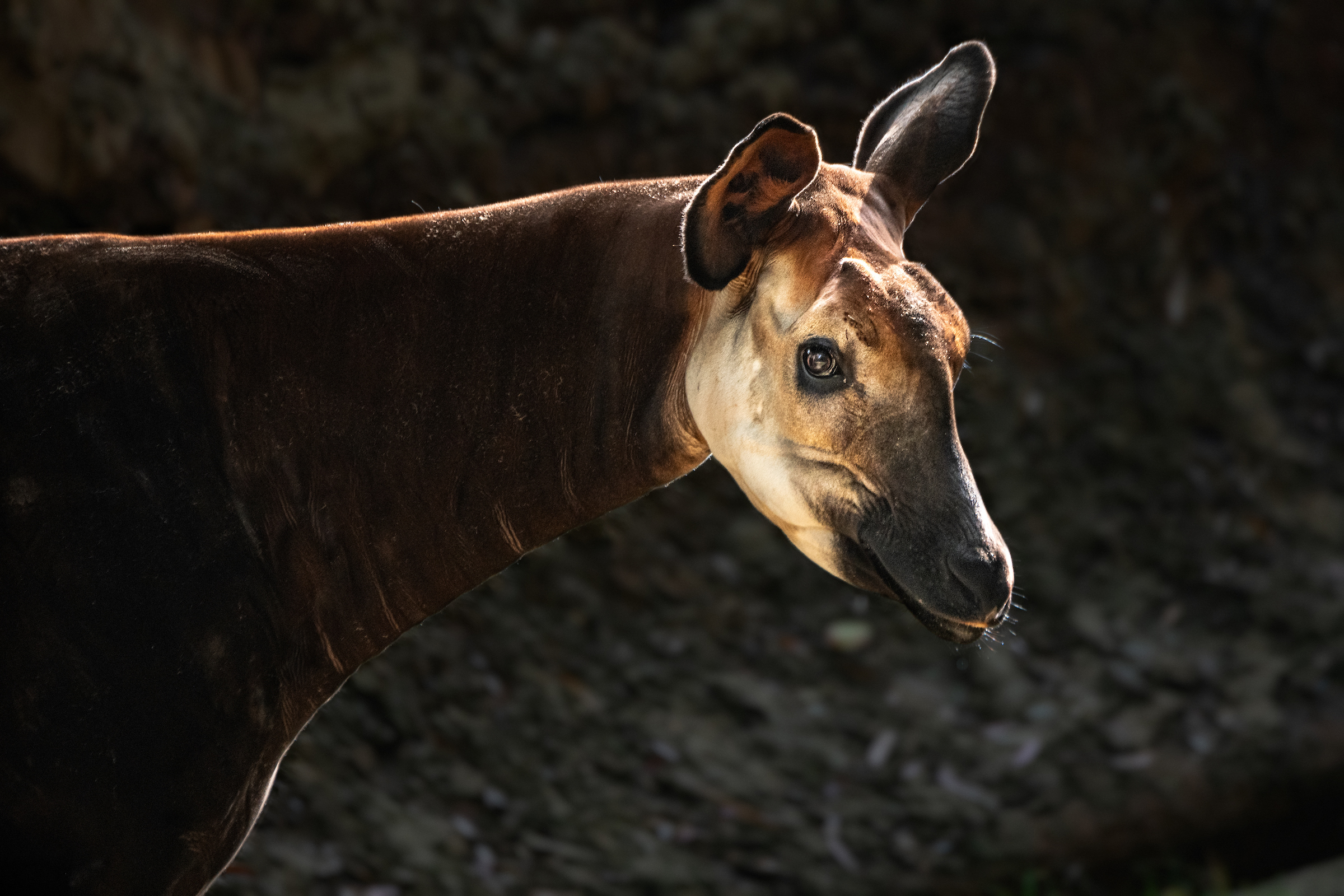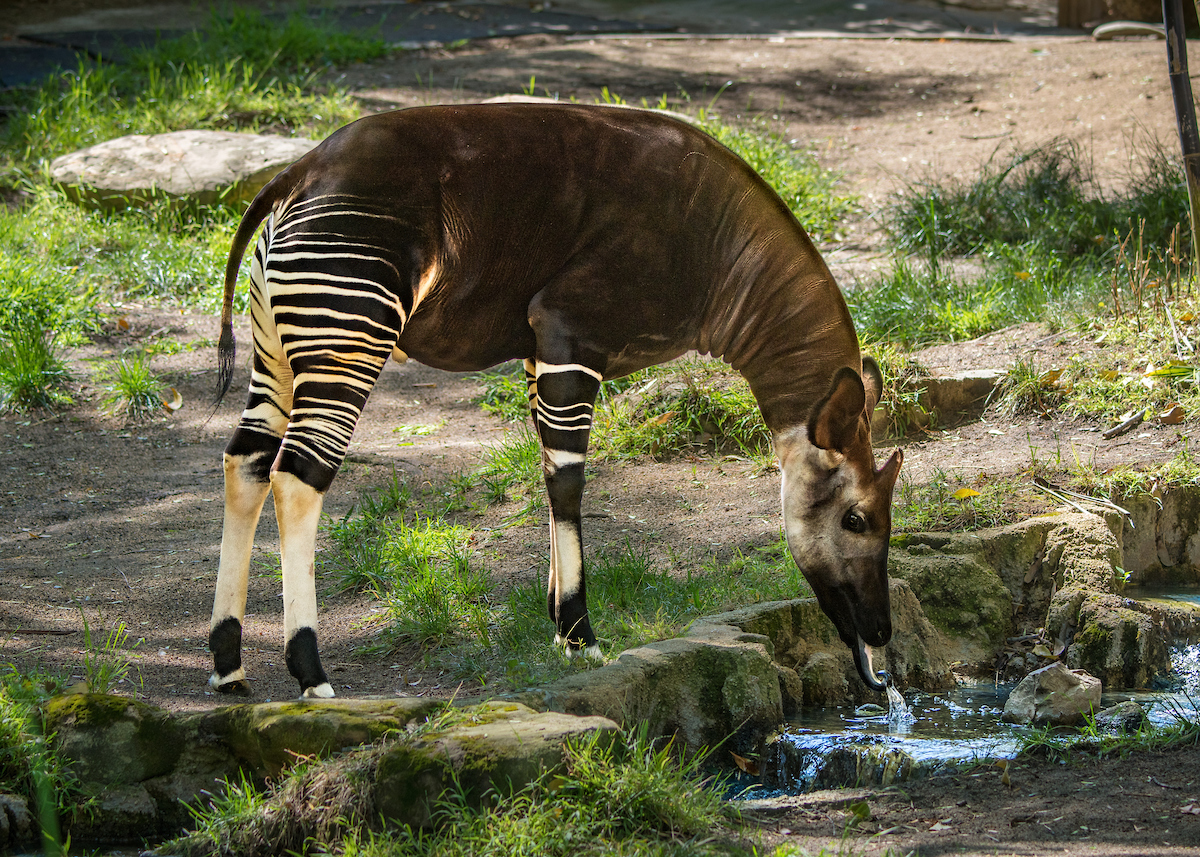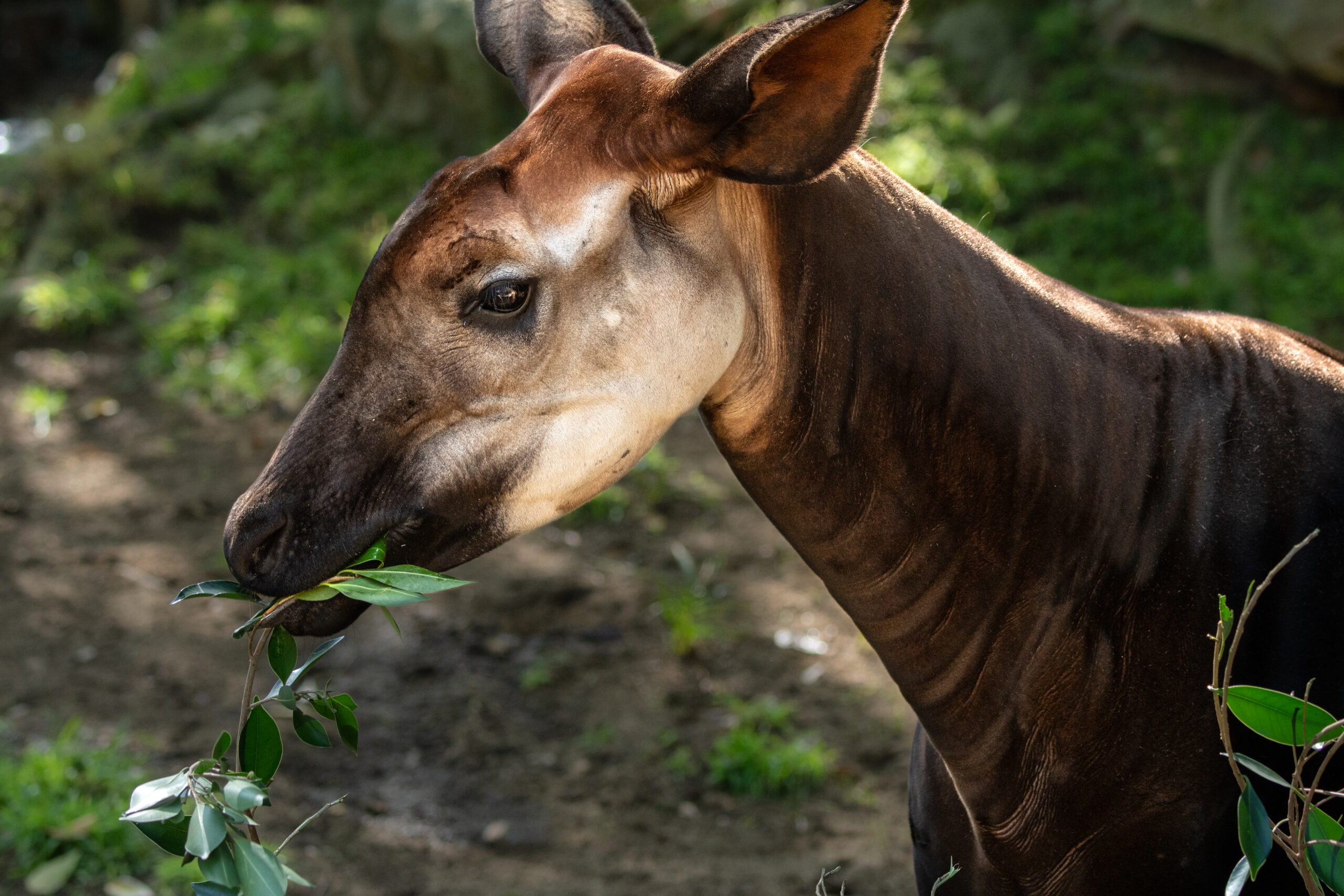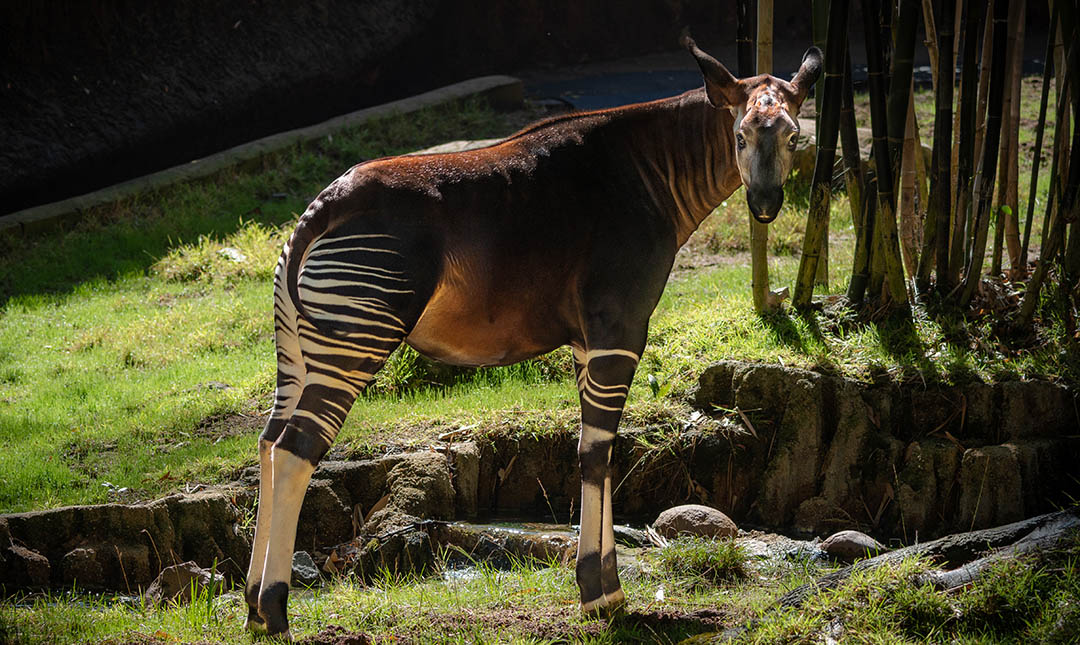About
The okapi is shy, secretive, and usually solitary. Unlike their distant relatives, giraffes, okapis are never found in herds. During the day they will follow a well-trodden network of forest trails that have been marked with scent glands located just above their hooves. The okapi’s reddish coat and zebra-like stripes help this forest dweller disappear quickly in dense foliage. Their coats are thick and oily, which allows water to glide off and keeps them dry. Okapis produce infrasonic vocalizations that are below the frequency range that humans are able to hear. These calls travel long distances through the forest. This enables okapis to communicate without being heard by leopards, their main predators.
A dominant male okapi establishes a home range and mates with females who pass through his territory. A single calf is born after a 14- to 16-month gestation. For the first few weeks of their lives, okapi calves are hidden in secluded nests by their mothers, who feed nearby. In order to avoid drawing the attention of predators, the calves do not defecate until they are 4–8 weeks old. When they are big enough to start browsing, mom’s stripes may serve as a “follow me” pattern for the youngsters.
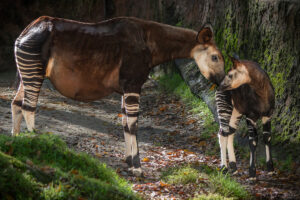

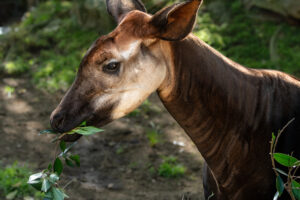
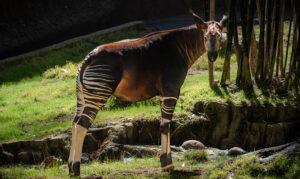
Status
Okapi are classified as endangered by the IUCN Red List. Because of their secretive life in densely forested habitat, population assessments are difficult. It is estimated that only 10,000 to 25,000 okapis remain in the wild. Major threats include habitat destruction, warfare, mining, and illegal hunting.
Habitat
The okapi is found only in the dense tropical rainforests of central Africa, primarily the Ituri Forest located in the northeastern Democratic Republic of Congo. Okapis are also known as “forest giraffes.”
Diet
In the wild, an okapi’s daily diet consists of 40 to 65 pounds of leaves, soft twigs, shoots, fruit, and fungi. At the Zoo, their diet includes fresh produce (such as carrots, apples, and onions) as well as food pellets and alfalfa hay. Salt licks are used to provide additional minerals.
Physical Characteristics
While this animal may seem zebra-like, the okapi is actually the only known living relative of the giraffe. If you look carefully at the okapi’s head, sloping back, and longer front legs, you will see the resemblance. Okapis’ necks are shorter because leaves in a rainforest are easier to reach, and okapis must navigate among dense trees and low hanging branches. As with giraffes, male okapis will neck fight for mating rites. Like giraffes, okapis have a 14- to 18-inch-long purplish tongue that is prehensile (grasping) and wraps around leaves to browse. Their tongue is long enough to groom their eyes, ears, and nose. About the size of a horse, an adult okapi stands over six feet at the head and weighs between 440 to 770 pounds. The female is slightly taller and heavier. Lifespan is estimated at 20 to 30 years.
LOCATION WITHIN THE ZOO
You’ll find this animal in the Africa section, near Mahale Cafe. See Zoo Map.

